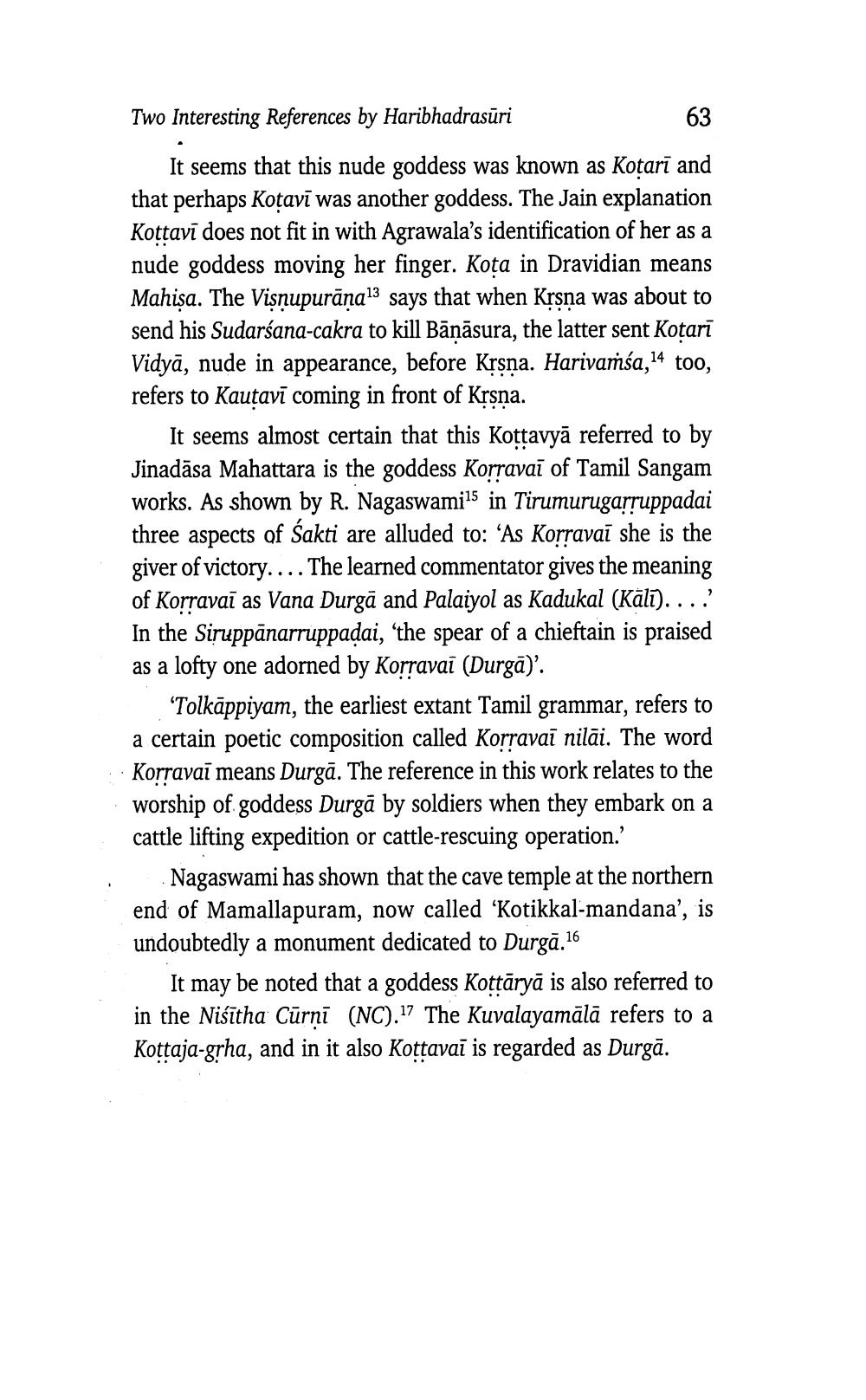________________
Two Interesting References by Haribhadrasūri
63
It seems that this nude goddess was known as Kotarī and that perhaps Koțavī was another goddess. The Jain explanation Kottavī does not fit in with Agrawala's identification of her as a nude goddess moving her finger. Koța in Dravidian means Mahişa. The Vişnupurāṇa13 says that when Krsna was about to send his Sudarśana-cakra to kill Bāņāsura, the latter sent Koțarī Vidyā, nude in appearance, before Krsna. Harivassa, 14 too, refers to Kautavī coming in front of Krsna.
It seems almost certain that this Kottavyā referred to by Jinadāsa Mahattara is the goddess Korravaī of Tamil Sangam works. As shown by R. Nagaswami15 in Tirumurugarruppadai three aspects of Sakti are alluded to: 'As Korravaī she is the giver of victory.... The learned commentator gives the meaning of Korravaī as Vana Durgā and Palaiyol as Kadukal (Kälī)....' In the Siruppānarruppadai, 'the spear of a chieftain is praised as a lofty one adorned by Korsavai (Durgā)'.
‘Tolkāppiyam, the earliest extant Tamil grammar, refers to a certain poetic composition called Korravaī nilāi. The word Korravai means Durgā. The reference in this work relates to the worship of goddess Durgā by soldiers when they embark on a cattle lifting expedition or cattle-rescuing operation.'
Nagaswami has shown that the cave temple at the northern end of Mamallapuram, now called “Kotikkal-mandana', is undoubtedly a monument dedicated to Durgā.16
It may be noted that a goddess Kottāryā is also referred to in the Niśītha Cūrnī (NC).17 The Kuvalayamālā refers to a Kottaja-grha, and in it also Kottavai is regarded as Durgā.




